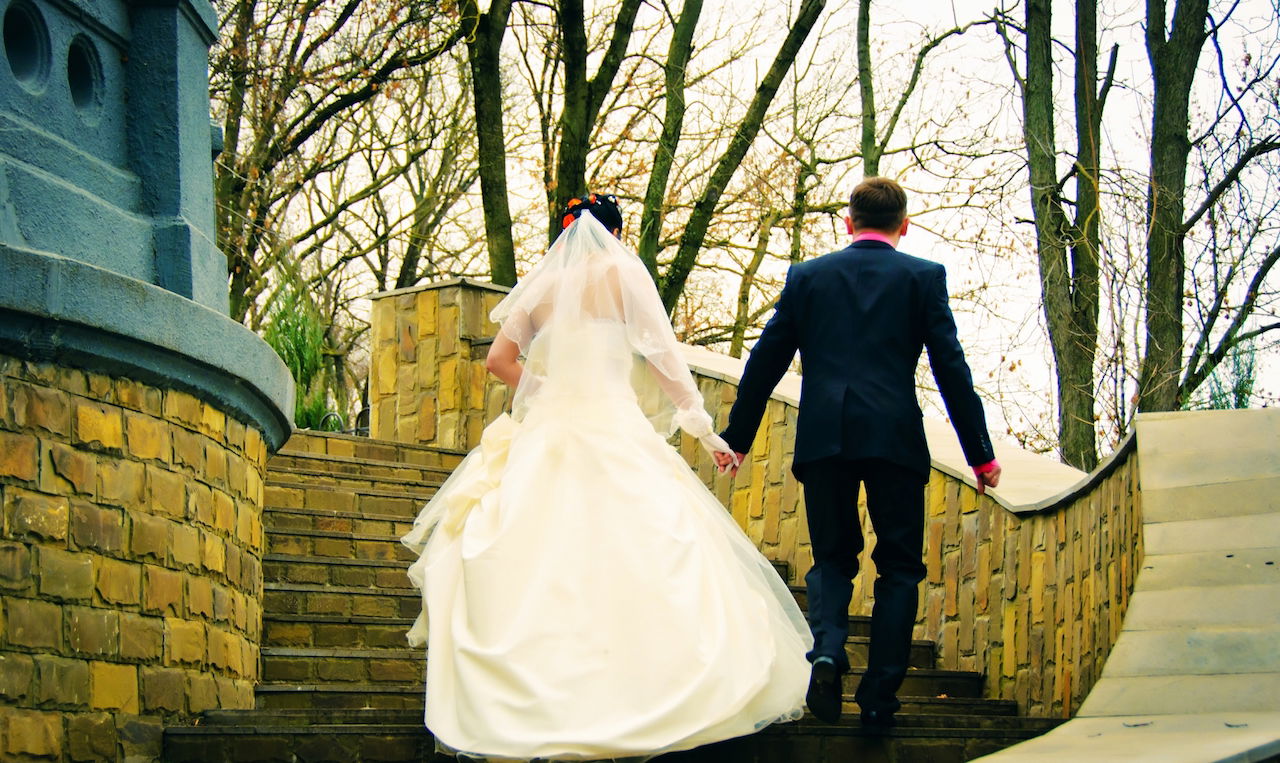Highlights
The story of how Saul Alinsky began community organizing starts in filthy, grimy, poor Back of the Yards in the 1930s. Adjacent to Chicago’s stinking meatpacking plants, near the city dumps where the meatpackers burned their waste, and close to Bubbly Creek—so called because of the gaseous bubbles that frothed from what had become the meatpackers’ sewer—lived thousands of poor first-generation immigrants, most of them packing workers. Upton Sinclair called it “the jungle,” and Carl Sandburg said it was “hog butcher to the world.”
It was also a place divided by ethnic tensions. The Poles hated the Lithuanians, the Lithuanians hated the Poles, the Slovaks hated the Bohemians, the Bohemians hated the Slovaks, and nobody trusted the Irish. Even the Poles (who outnumbered the other ethnic groups) were divided: for instance, the relatively prestigious Poles were suspicious of the hillbilly-like, mountain Poles, and the two groups had separate parishes.
As Alinsky biographer Sanford Horwitt recounts, in that bleak neighborhood Alinsky pitched two big ideas. The first was that ordinary citizens had the capacity to tackle local problems. He lamented that Back of the Yards residents “have no voice of their own, no organization (which is really their own instead of absentee) to represent them, no way in which they may lay their hand and their heart to the shaping of their own destinies.” To remedy this, he partnered with others to establish the Back of the Yards Neighborhood Council, which broke through ethnic divisions and brought together representatives from more than a hundred organizations, including churches, fraternal clubs, athletic clubs, businesses, and labor unions. To address the neighborhood’s deep poverty, the Council established a recreation center, served hot meals to malnourished children, and created an “infant-welfare” station to combat disease.
The second big idea was that, as Alinsky once said, “once people get to know each other as human beings rather than as impersonal symbols representing diverse philosophies and organizations, then a new set of relationships composed of a genuine understanding and real sympathy will arise.” He referred to this as his “cardinal principle.”
While some critics accuse Alinsky of socialism, he was an articulate believer in democracy. An admirer of Tocqueville’s Democracy in America (the book would become part of the curriculum at Alinsky’s community organizing training institute), he was instinctively repelled by the notion that a whole segment of Americans might be written off as an underclass. He believed in the importance of local civil society institutions coming together to solve local problems, and was even critical of the War on Poverty, which he lamented was beholden to “the welfare colonialism of the welfare industry.” (He believed that resources were becoming gobbled up by bureaucrats, and that the legislation ignored the lack of political power among poor people.)
Unfortunately, Alinsky’s laudable ideals of self-governance and community empowerment co-existed with his narrow insistence on “self-interest” as the great motivator, an “us vs. them” attitude that sought success through conflict and polarization, and a moral philosophy that blithely asserted that—as he put in Reveille for Radicals—“in war the ends justifies almost any means” (and he was quick to declare war!).
Alinsky’s abiding virtue was his sense that the future of democracy would be determined in forgotten places like Back of the Yards; he sought to empower residents of working-class neighborhoods to become citizens and to take ownership of their communities. Whatever one thinks of Alinsky or his tactics, one can appreciate that the spirit of community organizing for which he stood taps into an old American ideal: the “active participation” of ordinary citizens, including the poorest.
What would happen if Saul Alinsky, Charles Murray, and Pope Francis walked into a bar to talk about healing the class-based marriage divide?
Forty years after Alinsky’s death, Charles Murray documented the troubling development of a growing underclass. Many are by now familiar with Murray’s diagnosis of a nation fracturing into two separate classes, divided not just by income and education but by core behaviors like marriage, work, and religion. Like Alinsky, Murray believes this trend endangers the American Project. He suggests that “a great many people, especially in the new upper class, just need to start preaching what they practice.” He hopes for “a civic Great Awakening among the new upper class.”
But how would this start?
An intriguing answer emerges in the Buenos Aires slums. As Austin Ivereigh documents in his terrific biography of Pope Francis, The Great Reformer, then-Archbishop Jorge Mario Bergoglio spent his weekends in the slums, walking around and talking to people, drinking mate and hearing confessions, baptizing babies and celebrating festivals. By contrast, he rarely spent time in the more affluent parts of the city. When Ivereigh interviewed residents of the affluent Barrio Norte neighborhood, he found Catholics who complained that they rarely saw the archbishop. But when Ivereigh went to the slums and working-class parishes, residents told him that Bergoglio came around all the time. In fact, he writes, “Almost everyone in the little choked streets around Caacupe parish can prove this with photos on their phones.”
Bergoglio’s preference for the slums reflected his conviction that the Church must evangelize from the “peripheries.” As one of Bergoglio’s slum priests put it, “The idea is that the Church is first among the poor and from there reaches out to everyone…. It’s the opposite of what in economics is called the trickle-down effect.”
For Bergoglio, this was not a matter of romanticizing the poor; it grew out of his Church’s “preferential option for the poor.” Bergoglio interpreted the teaching as a call to be especially close to the suffering of poor people, as well as to respect their genius: for instance, he believed that the popular piety found among the poor of Buenos Aires was a vital source of renewal for the Church. Moreover, he believed that starting with the poor could enable the Church to get past ideological divides.
In other words, to the question of how to commence a “civic Great Awakening among the new upper class,” Bergoglio might suggest finding a forgotten neighborhood and becoming part of the life of the people there. From that “accompaniment,” new ideas and work could emerge. For instance, one of Bergoglio’s priests who led a slum parish started a high school, a trade school, two farms where recovering addicts lived and worked, a community newspaper, and a radio station.
What would happen if these three men—Saul Alinsky, Charles Murray, and Pope Francis—walked into a bar to talk about healing the class-based marriage divide? Murray might start by providing a statistical dump. Alinsky would probably brashly interrupt and say we’ve got to find the working-class young people who can become leaders. Francis would make sure that they meet in a working-class bar drinking Bud Light. In the roaring time that would doubtless follow, they would probably find a common concern for broad-based citizen participation. And this, despite their political differences—Alinsky a liberal, Murray a libertarian, and Francis a category-defying Catholic.
To address the class-based marriage divide, we can learn something from the spirit of community organizing and the preferential option for the poor. Alinsky’s insistence on the capacity of poor and working-class people to shape their destiny, and Pope Francis’ belief that reform starts at the bottom and works its way up, suggest that the question is not so much how the well-educated can teach the working class how to succeed in marriage and family, as Murray proposes, but how the working class can be empowered to lead the way in renewing marriage in their communities. The difference is subtle, but important. The former tries to transmit the behaviors of the well-educated to the less-educated, whereas the latter focuses on enabling members of working-class communities to become leaders among their peers. The former is top-down; the latter bottom-up.
The bottom-up approach reflects subsidiarity—the principle that a community of a higher order should not interfere in the affairs of a lower order in a way that deprives the latter of its function, but should support and coordinate with it as necessary. It also reflects human nature. Who is more likely to influence the unmarried cashier flirting with becoming pregnant? Her single-mom coworker who tells her that she wishes she would have waited until marrying a good man to have kids, or the policy wonks talking about the importance of contraception, and how single parenthood is associated with a host of social problems? Experts have something important to contribute, but as Bill Doherty and Jason Carroll put it, “Professionals can play an important role in family initiatives when they learn to partner with families in identifying challenges, mobilizing resources, generating plans, and carrying out public actions.”
Applying the spirit of community organizing and the option for the poor to the class-based marriage divide could yield deep insights, renewed institutions, some new institutions, and ties of solidarity. It could also be a lot of fun.
















